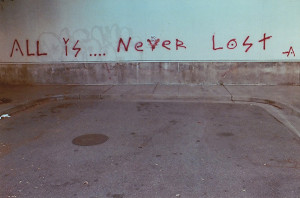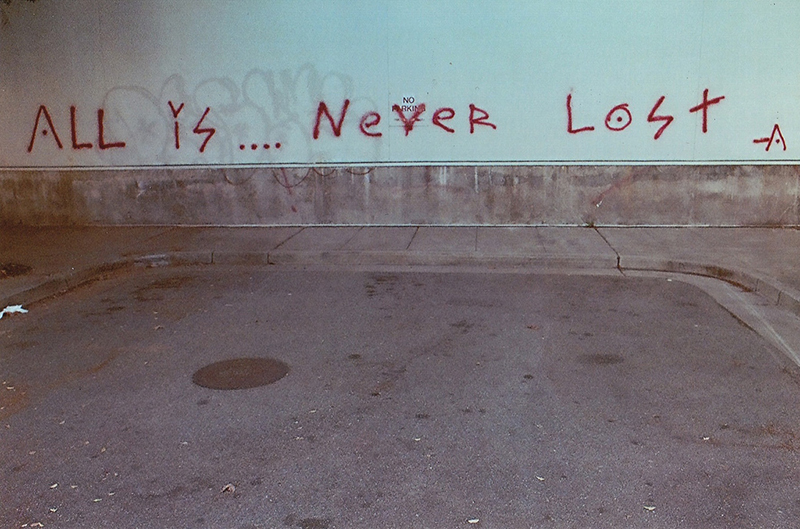Shawn had graffiti roots, tagging AKO or AKAYO all over his hometown of Napa when he was a kid, and kept it up after he moved to SF once he turned 18. Over the years, he also started making paintings on paper and canvas and doing collage work; he was constantly experimenting with materials. He hustled to keep moving forward as an artist in the Bay Area, but he was also always finding a way to create community. Boosting the art of others was of equal importance to him as the promotion of his own work.
Shawn lived for the moment, working super hard to keep doing what he loved, avoiding 9-to-5 jobs and sleeping in the small back room of the Book and Job Gallery in the Tenderloin while working as an artist. He and a friend had their own art space a few years ago, 531 Gallery in Vallejo, and Shawn slept in the back room of that gallery too.
As an artist, Shawn influenced me in more ways than I ever realized. We shared a love of colorful geometry. Looking thoroughly at his work has made me consider how much artists in a community are in dialogue, influencing each other in both overt and subtle ways. It’s important to make space and time for this conversation; it helps you define your own personal vision and learn how to express it so that others can understand what you are trying to say.
He loved art and appreciated it as much as he enjoyed making his own. I’ll always fondly remember how he dressed up and wore a tie to the local exhibits of some of his art heroes, Margaret Kilgallen and Garry Winogrand. In the last couple of years, Shawn became deeply involved in photography, shooting constantly and getting really excited about film and instant cameras. As an SF street photographer, he was up there among the best of them, even though he’d only recently started exploring the medium. The empathy he had for his subjects shines through in his work, which makes it special.
He loved living in the Tenderloin and made friends with his marginalized neighbors. He chatted them up and it’s evident in his work that he took care with his subjects. As someone wrote on his Facebook page, he was a friend to all and a stranger to none. Many of Shawn’s photographs were featured throughout the years as the photo of the day on FecalFace.com, accompanied by short descriptions in his own words.
Shawn was also big into skateboarding, and did a lot of skate photography, documenting communities in which he was deeply entrenched, which made his work honest and pure.
Shawn’s legacy in art lives online and in the hundreds of unprocessed rolls of film that he left behind, which friends will be developing and exhibiting in the future. On a personal level, his legacy will live on because I will think of him every time I find some beauty in the grime of our city. Every time I see a tag or a sticker or some thoughtful photography or notice the colors of street scraps or a city worker buffing graffiti, I’ll be thinking of Shawn, because he made those things more visible to me. He made me consider their relevance to my visual culture. He also made me understand the importance of encouraging fellow creatives, and being non-judgemental about those struggling around you, whether you know them or not.
Every time I see an artist hit it big, or quit their day job, every time I drink coffee and crank out some art, every time I do something enjoyable that makes me feel life is worthwhile, I will think of Shawn Whisenant. And that’s all we can do, Shawn, is paint in your colors and think of you.



















